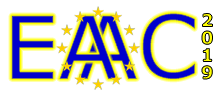Speaker
Description
Laser-driven proton acceleration is a field of growing interest, in particular for its numerous applications, including in the field of materials science. A benefit of these laser-based particle sources is their potential for a relative compactness in addition to some characteristics at the source that differ from those of conventional, radio-frequency based proton sources. These features include, e.g., a higher brilliance, a shorter duration, and a larger energy spread. Recently, the use of laser-accelerated protons has been proposed in the field of Cultural Heritage, as alternative source for the Particle Induced X-ray Emission diagnostic (“laser-PIXE”), a particular ion beam analysis (IBA) technique that allows to precisely analyse the chemical composition of the material bulk. Experimental feasibility of laser-PIXE has been proven recently in a proof-of-principle experiment on a few materials, but some benefits of laser-driven proton characteristics are still unknown (larger energy-spread, higher flux, etc). Using Geant4 simulations and focusing on materials specifically of interest for the Cultural Heritage here we show that the laser-PIXE allows analysing a larger volume than conventional PIXE, profiting from the large energy spread of laser-accelerated protons. Furthermore, the large energy spread allows investigating multilayer materials, providing an advantage compared to conventional PIXE technologies.

